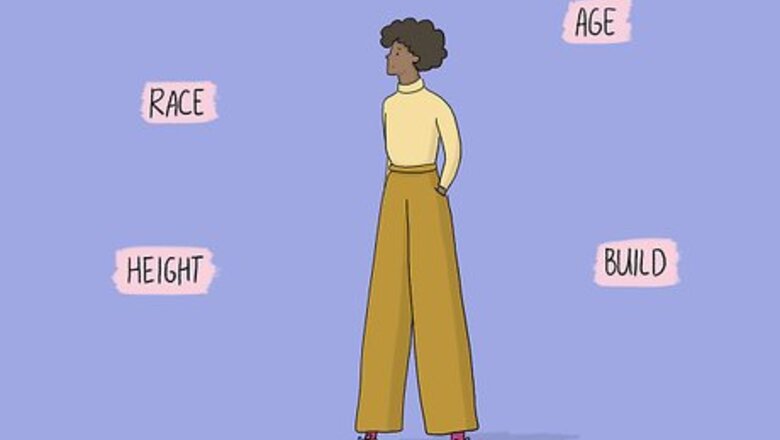
views
Discussing Her Physical Appearance
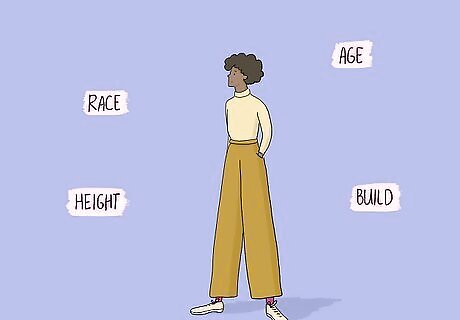
Start with a general description of her appearance. Consider the very first things that you tend to notice about a person when you look at them. When you look at a girl, your initial impression probably includes things like her approximate age, race, height, and build. Think of the most general description you might start with if you had to describe a suspect to the police, or the types of physical information that you might find on a driver's license. For example, your first impression might be that the girl is Caucasian, in her mid-teens, tall, and husky.
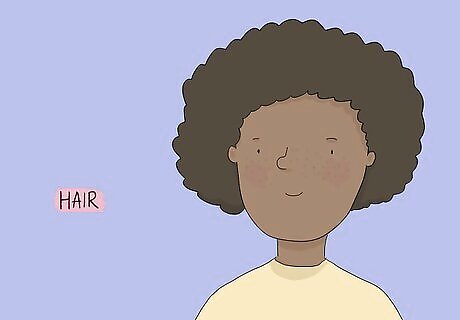
Describe her hair. Think about the color, texture, and length of her hair. Is it straight and blonde, or curly and dark? Does it have long layers, or is it buzzed short or cut pixie-style? Is it glossy or dull? You can also describe how it is styled—e.g., in a ponytail, braided, or hanging loose. For example, you could say, “She has thick, naturally curly hair that hangs a little bit below her shoulders. It's dark brown with a few caramel-colored highlights.” If she has a striking hairstyle or a distinctive dye job, make sure to point that out. For example, “Her hair is cut short and styled into a faux hawk. It's dyed cotton candy blue at the tips.”
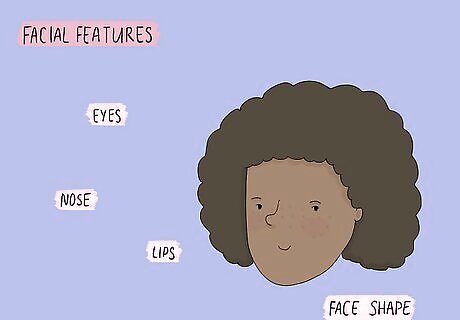
Talk about her facial features. Include a general description of the shape of her face as well as details about her individual features. Look for features that stand out and make her distinctive and identifiable. The eyes are one of the most identifiable features of a person's face, so make sure to describe them. Focus on things like their color and shape. For example, “Her eyes are almond-shaped and very dark brown.” When describing her whole face, you might say something like, “She has a wide, round face with a pointed chin. Her eyes are big and greyish-green, with dark eyelashes. Her nose is short and a little turned up at the end.”
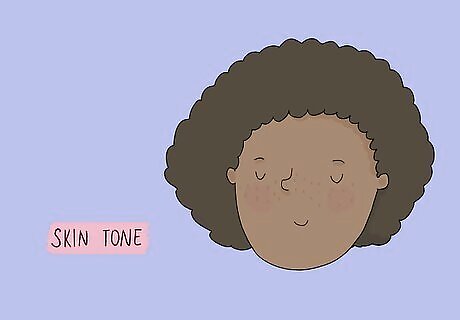
Note her skin tone. Skin color is another identifying characteristic that people are quick to notice. You can talk about it in terms of value (dark, medium, light, fair) as well as the actual color (e.g., brown, beige, tan, pink). You might also make note of other obvious skin features, like freckles or rosy cheeks. For example, you could say, “She has fair skin with a few freckles on her nose,” or “Her skin is golden-brown with a subtle rosy glow around her cheeks.”
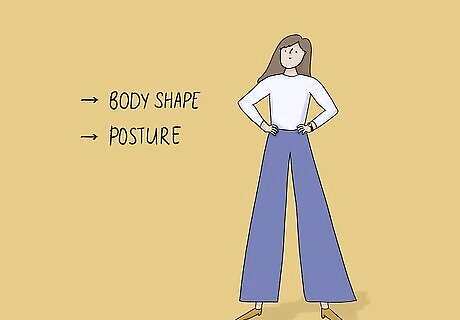
Discuss her body shape. Is she tall, short, or average for her age? Is she slim, heavy-set, or somewhere in between? If the girl is athletic, she might be trim and lean or big and muscular. Some girls are curvy, while others have a more lanky or boyish figure. You can also describe her posture—for example, does she slouch, or stand tall? For example, you might say, “She's tall and lanky, but she has a slouch that makes her look shorter than she is.”
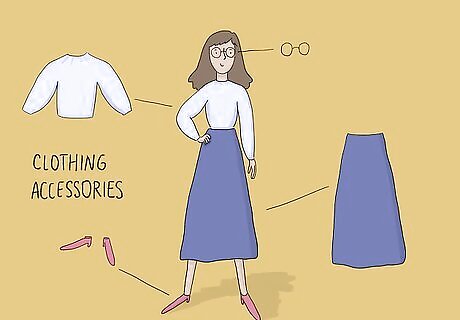
Touch on how she's dressed. This can include either specific items of clothing or her general style. For example, if you're describing how she looks at a particular moment, you could say, “She was wearing a bright red, knee-length summer dress and blue canvas shoes.” Speaking more generally, you might say, “She has kind of a bohemian style. She likes to dress in bright colors.” You can also mention things like jewelry, accessories, and glasses. For example, “She always wears a pair of simple gold hoop earrings.”
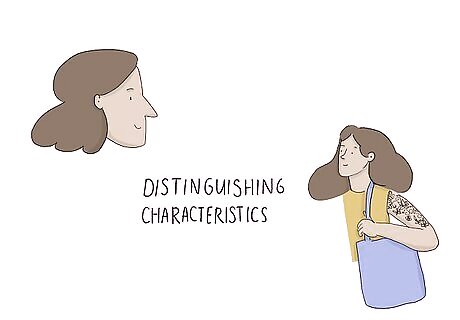
Mention any distinguishing characteristics. These could include natural features, such as birthmarks or scars, or intentional modifications, like tattoos or piercings. Look for anything that stands out and makes her uniquely identifiable. For example, you might say, “She has a chipped front tooth and a beauty mark next to her nose on the right side.”
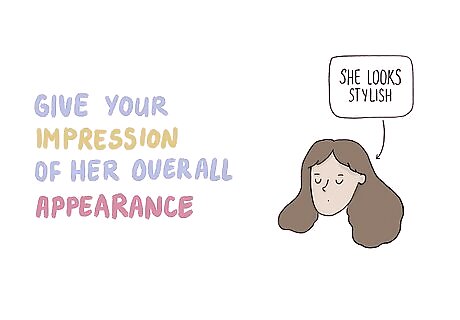
Give your impression of her overall appearance. If you want, you can say a few words about how you, personally, feel about her appearance. For example, you might say that she is “pretty,” “striking,” “ordinary,” or “cute.” You could also say things like “She looks stylish and put-together,” or “She's kind of edgy-looking.” Depending on the context, it might not be appropriate to use these kinds of judgmental or subjective descriptions. If you're describing a real person, be sensitive to how she might feel if she heard or read your description.
Talking about Her Personality and Mannerisms
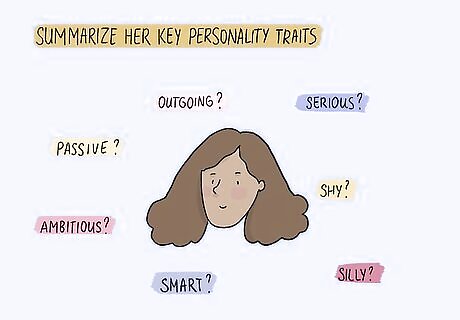
Summarize her key personality traits. Think of the first thing you would say about the girl if someone asked you what she was like as a person. Is she outgoing, or shy? Serious, or silly? Does she have a lot of drive and ambition, or is she more passive and laid back? What's her sense of humor like? You can also think of personality in terms of how she interacts with other people. For example, you might say, “Sarah is kind of shy at first, but she opens up a lot once you get to know her. She's very smart and has a wicked sense of humor.”
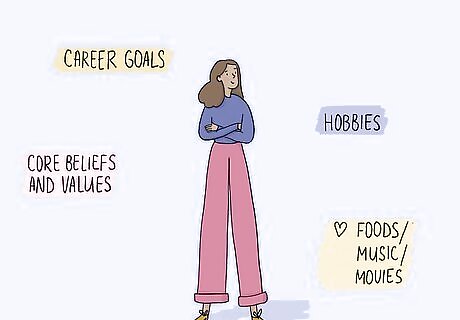
Discuss her interests. In order to really understand who a person is, it's important to know something about the things they care about. Describe what you know about the girl's major interests. This could include things like her career goals, her hobbies, foods she likes, music she listens to, or her favorite movies. You could also talk about things like her core beliefs and values. For example, “Florence loves writing, and she wants to be a published author someday. She's very passionate about social justice issues.”
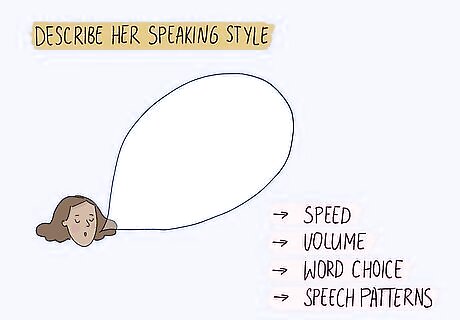
Describe her speaking style. Consider things like the speed and volume at which the girl speaks, as well as her word choice and speech patterns. Perhaps the girl you are describing talks fast and runs her words together, or maybe she has a slow and leisurely style. She may tend to speak quietly, or maybe everyone can hear her coming from a mile away. Does she usually ramble when she talks, or does she get straight to the point? You can also talk about the sound of her voice. Is it high and childish, or deep and mature-sounding? Mellow, or harsh? For example, you could say, “She has a quiet voice and speaks in a very level tone. Her speech is slow and deliberate, and she always takes a moment to think about what she wants to say before talking.”

Note her body language. A surprising amount of human communication is nonverbal. Being able to describe the girl's body language can really help your listener or reader get a good grasp of what she is like. For example: Describe how she uses her hands when she is speaking. Does she gesture a lot, or does she usually sit still with her hands in her lap? Discuss whether her stance tends to be open and confident (arms at her sides, head up) or closed off and defensive (arms folded in front of her chest, gaze down or off to the side). Talk about her facial expressions. Does she smile a lot and make eye contact? Is she more likely to frown or have a blank expression? You could say something like, “She's very animated. Her hands are always in motion when she's talking.”
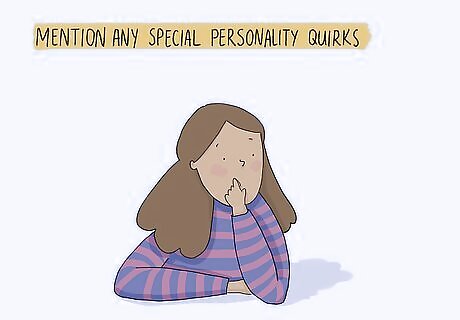
Mention any special personality quirks. Just like distinguishing physical characteristics, people can have distinctive behaviors or mannerisms that make them stand out. Think about things like particular words she uses all the time or gestures she regularly makes. For example, maybe she chews her fingernails or twirls her hair around her fingers when she's talking to someone. Maybe she clears her throat a lot or uses certain phrases all the time (e.g., starting every other sentence with “Yeah, so, anyway . . .”).
Describing a Girl in Creative Writing

Avoid giving too many details about her appearance. Your reader will probably lose interest if you bog them down with a long list of physical characteristics and superficial details. Stick to a handful of features that you think are most important for conveying what the girl looks like. For example, “She was a young girl, no more than 15, with a narrow face and dark, fierce eyes. She was all straight lines and hard angles except for her cloud of downy brown hair.” Don't linger over the minute details of her hairstyle, clothing, and physical dimensions unless they are directly relevant to what is happening in the moment you are describing. Just sketch out the basics.

Choose words that evoke a specific image. When selecting descriptive words, look for ways to create a strong impact without having to layer on too many vague adjectives. Pick words that automatically bring up a clear and well-defined image in the reader's mind. For example, instead of saying “She had really pale blue eyes,” try something like “Her eyes were the color of sea foam.” Instead of saying “Her hair was long and light brown,” try “Her hair cascaded down her back like a honey-colored waterfall.”
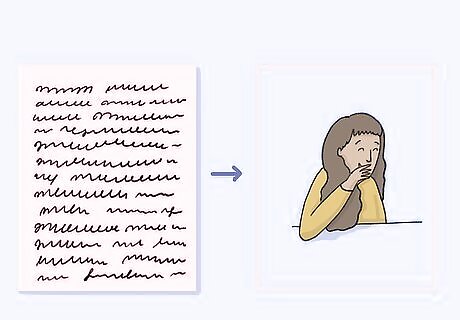
Show her personality and mannerisms rather than telling about them. When trying to give your readers a sense of what the girl is like as a person, use concrete examples to illustrate her major characteristics. Simply telling your readers what she is like instead of showing them will make her feel flat and unconvincing. For example, instead of saying “Lily thought everything was funny,” try something like: “Lily had dissolved into helpless giggles again. It didn't take much to set her off. She once laughed through an entire algebra lecture after the professor sneezed while explaining how to find the slope of a line.”
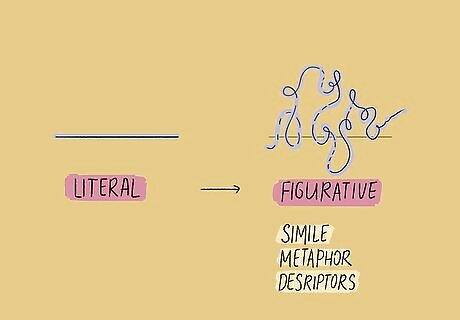
Use figurative language to keep your description interesting. Your descriptions don't always have to be literal. Bring the girl to life in the reader's mind by using simile, metaphor, and descriptors that create a powerful feeling or impression without necessarily offering specific details. For example, “Her voice was like warm molasses poured over fluffy brown sugar.”
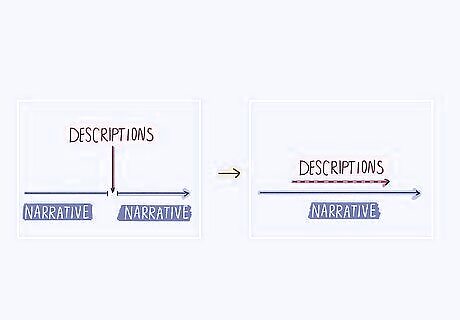
Try to work descriptions in naturally. Instead of interrupting the narrative to describe the girl's appearance or mannerisms, try to work descriptive information into the flow of the story. For example, you might mention something about her appearance while describing an action she is performing. Instead of saying, “She had long, black hair that she wore in a ponytail,” try something like: “'Let's go,' she said, quickly pulling her black hair into a ponytail that swept her shoulder blades as she walked.”















Comments
0 comment